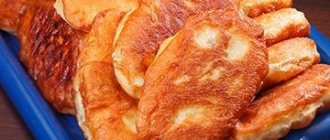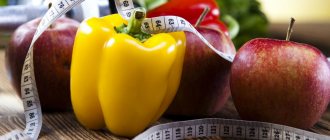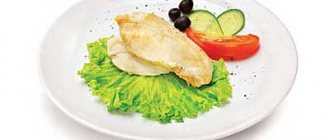The question of the calorie content of human fat worries many people who want to lose weight.
The calorie content of fat as a pure product is 9000 kcal per kilogram.
But the human fat layer also contains water and connective tissue. As a result, the calorie content of human fat becomes lower.
There are 7,700 kcal per kilogram of human fat.
This is the number of calories you will need to burn to reduce your body weight by one kilogram .
How many calories are in 1 gram of fat. Nutritional energy value
The energy value of food (calorie content) is the estimated amount of thermal energy (measured in calories or joules) that is produced by the human or animal body during the assimilation (catabolism) of eaten foods. Depends on the chemical composition of food (amount of proteins, fats, carbohydrates and other substances). The energy value is usually indicated on the packaging of any industrially manufactured products.
For food products, the energy value is usually indicated per 100 grams of product, or per 100 ml of drinks, and includes information on the amount of three main components - BZHU (proteins, fats, carbohydrates) and total energy value. The BJU content is presented in grams, and the caloric content is presented in kcal and kJ (1 kcal = 4.1868 kJ).
The calorie content of food is calculated by burning it in a calorimeter. At the same time, the calorie content of the same product in different tables may differ. This is due to different climatic conditions and methods of growing plants and animals.
Properties of human fat
There is an opinion that the number of fat cells in the body is determined by a hereditary factor, such as eye or hair color. However, there is other information that refutes this opinion, and it lies in the fact that the number of fat cells in a child is determined by how the mother ate. It also became known that in obesity, fat cells can divide on their own, and then only surgical intervention can help overcome them.
Fat in the body is divided into several types: brown, subcutaneous and internal. The brown type of fat is needed so that the body can maintain the correct temperature. There is enough such fat in the body of infants - it protects them from hypothermia. Subcutaneous fat, as its name implies, is located directly under the skin and is the familiar cellulite.
Together with the blood, excess fat circulates through the vessels, clogs them, and is deposited on the wall. It becomes difficult for blood to penetrate the body's cells, blood pressure rises, and possible malaise. Cholesterol plaques cause stroke and heart attack. Therefore, it is important to get rid of not only the fat that is visible to the naked eye, but also to free the internal organs from it. Despite the fact that the effects of different types of fat are different, their calorie content remains the same.
How many calories do you need to burn per day to lose weight?
The fight against extra centimeters is not easy; to win you will need a lot of strength and will. And only those who went straight to achieving their dreams will be able to achieve a positive result.
Often, if a woman was overweight, she justified it not with her weak will, but with some kind of health problems, genetic predisposition, rampant hormones - whatever. After all, sometimes it is difficult to admit that the culprit is simple laziness.
So how many calories do you need to burn to get rid of 1 kg of fat?
How many calories do you need to burn per day to lose 1 kg of fat?
It is believed that to burn 1 kg of fat you need to spend 7700 kcal. Nutritionists advise losing weight by 2-4 kg per month (due to fat). Accordingly, in order to safely lose 0.5 kg of fat per week for the body (keep in mind that the plumb line will be slightly larger due to lost water, muscles, etc.), you need to create a calorie deficit of 3850 kcal per week, which is 550 kcal per day (3850:7).
This is exactly the calorie deficit that needs to be created in order to remove 2 kg of fat per month.
You cannot lose weight by cutting down your diet alone. You must eat properly and balanced. Therefore, it is necessary to achieve a calorie deficit in a comprehensive manner: by reducing calorie intake and by increasing physical activity. With an active lifestyle, your metabolism speeds up and your body burns calories faster during everyday activities.
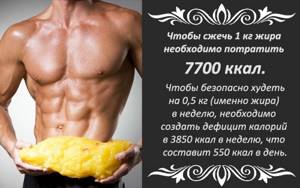
All this is possible if you go through all the steps presented below.
Formulating a goal
The main thing you need is to formulate a goal. To start, make a list of what losing weight will bring you. For example, it could be a dress, a variety of outfits, dates with handsome men, a healthy body. Also make a list of the reasons that could prevent you from achieving this goal.
These points include softness, weakness of will, and lack of character. If you keep these two lists in front of you constantly and compare the obstacles and possible results, you will undoubtedly overcome all obstacles.
The role of fats in the human body
Fat reserves in the body have completely natural and necessary functions: they are responsible for protecting internal organs and supporting the body if you have to starve. It helps to recover from illness and enables women to bear and feed a child.
However, if fat is allowed to exist uncontrollably, in quantities that exceed the norm, it will begin to influence a number of processes occurring in the body. Abdominal fat affects and disrupts hormonal levels. With a high fat content, internal organs work hard.
Therefore, it is important to keep your fat level normal and get rid of excess deposits. At the same time, it is important to know not only how many calories are in one kilogram of human fat, but also how to burn it correctly, since with a sharp and incorrect weight loss, it is not fat that will be lost first, but fluid and muscle mass, and the consequences can be very dangerous.
If you lose weight very quickly, you will lose more muscle mass than fat. As a result, muscle tissue that is capable of burning fat will disappear, and metabolic processes will slow down. Fats do not consume as many calories as muscles, which are destroyed under the influence of rapid weight loss. At the same time, the overall appearance of the body deteriorates, as the skin sags.
When the diet comes to an end, the body first of all restores lost fat reserves, and only then begins to restore muscles, but still not to the same extent as before. As a result, weight becomes less, but not due to fats - there are more of them in the body, even if the weight is the same.

To maintain your weight at the same level, you need to consume significantly fewer calories, since fat uses nine times less energy than muscle mass. That is, you will have to go on an even stricter diet. And these are new negative consequences. The body will not cope with the restrictions, and will try to do everything to ensure that the fat in the body remains and increases, because it is a reserve in case of just such emergency situations.
How to find out your calorie intake
Fundamental Soviet science weighed and measured the norms of daily calorie intake for the individual working for the benefit of the fatherland. Here is a scan of this table, which medical university students must take during the test:

Note: Group I includes workers primarily in mental labor; Group II - workers of light physical labor; Group III - workers of moderate physical labor; Group IV - workers of heavy physical labor; Group V - workers of particularly heavy physical labor.
In other words, a girl under 30 who regularly sits in front of a monitor should consume within 2000 calories per day. It’s easy to imagine what 2000 calories are in our photo gallery, where each photo shows 1000 calories.
Now it’s easy to find out your daily calorie intake - just use the Zozhnik counter - it’s right under the logo on any page.
Advice from nutritionists
Based on materials from FITNESSERA

The most important thing in the process of gaining or losing weight is counting calories.
There are only 30 calories in 100 grams of watermelon, as it consists mainly of water. The most interesting thing is that watermelon is a source of many useful elements. The water content of watermelon is about 90%, so there are very few calories compared to other products. Watermelon contains 300 calories per kg.
A few words about buckwheat. Buckwheat is healthier compared to other cereals that exist on the store counter. There are 315 kcal per 100 grams of buckwheat, but few people will eat it raw. If you steam buckwheat kernels with boiling water, then 100 grams will contain only 87 kcal, given that water gets into the kernels and, thus, the calorie content of the product decreases.
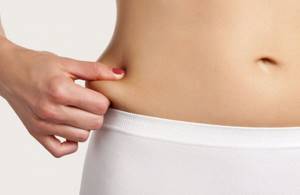
A banana contains only 89. This product has great energy value and replenishes strength. Thus, nutritionists recommend eating 1 banana after training so as not to feel tired in the body and continue the day with fruitful work.
Important! Nutritionists do not recommend eating flour products, because 100 grams of flour contains 364 kcal. But if a person wants to gain weight, then he needs to eat flour products, bread, etc.
When you need to burn extra calories that were eaten during the day, the following methods help. Running or jumping rope is a great way to remove excess weight that was gained by eating sweets and flour products. Nutritionists recommend giving up sweet and flour products, as they contain the most calories.
Thus, when you need to lose weight, it is better to eat foods with a small amount of calories, and if you need to gain weight in a short time, then be sure to have a calorie surplus. If you gain quality weight, then it is advisable to do this by consuming healthy foods, and if the body needs fat deposits and quickly, then it is better to eat high-calorie foods, namely more sweets and starchy foods.
Note! The most important thing in the process of gaining or losing weight is counting calories.
Physical activity for weight loss
Many people wonder how much they need to jump to burn 1000 calories. Let's figure this out.
Jumping rope is the most effective way to burn calories. On average, a person weighing 75 kilograms burns 980 kcal per hour while jumping rope.
During any physical activity, muscle mass will be trained, which is responsible for burning fat deposits. Therefore, for example, even minor fitness activities have a positive effect on your figure.
In order to achieve an ideal figure, you need to perform workouts regularly for one month or even longer. Initially, you will feel aching pain in your muscles, but proper warm-up and continued exercise will put everything in its place.
How long do you need to run to burn 1000 calories? The calculation is carried out not in the number of meters covered, but in the running time. The faster you run, the more calories you will burn. On average, we can say that you can burn 1000 kcal/hour when running up the stairs.

Calories for weight gain
The situation with weight gain is completely the opposite. Having determined for yourself how many kilograms you need to gain, you can calculate how many kilocalories per day you need to increase your diet.
For example, provided that you need to gain 5 kg in a month, the calculations will look like this:
- 7715 (calories per kg of weight) x 5 = 38575 - the number of kilocalories that you should consume in excess of the norm per month;
- 38575/30 (number of days in a month) = 1285 - the number of kilocalories that you should add to your daily calorie intake.
Be careful, weight gain sometimes requires almost as many calories as your individual norm.
Those who want to gain weight often make a big mistake - they eat high-calorie, but unhealthy foods. They believe that it is enough to eat food with a high content of calories and weight will increase, while few people think about the harm they can cause to the body with such nutrition. In fact, there are healthy foods that are high in calories, including: salmon, beef, nuts, cheese, bananas, olive oil, milkshakes.
Do we eat what we want? Losing weight on a 1000 kcal diet
Hello, friends! The long-term war against excess weight forces people to come up with various types of “weapons”.
These include numerous power systems. Some are especially extreme, others are sometimes shocking from the diet they have prepared.
Those who are always losing weight have come up with a universal method. It's called the 1000 calorie diet. They say it is easy and simple to stick to. You can also choose your favorite foods, the main thing is to stay within your caloric intake.
Today we will understand its principles. Let's finally find out whether it is as safe and effective as numerous reviews say.
We eat to live
A calorie is a unit of measurement of the energy value of a product. It characterizes the total nutritional value along with the indicators of proteins, fats and carbohydrates. Calories provide energy to our body. They are also responsible for physical and mental work.
Friends, you already know that each person is individual and each person has their own calorie needs per day.
For some, 3000 kcal is considered the norm, and for others, 1700 kcal. All this depends on different characteristics (weight, gender, age, etc.).
But the World Health Organization insists that the minimum daily calorie intake should not fall below 1200 kcal.
Otherwise, metabolic processes will slow down. And exceeding your usual figure threatens rapid weight gain.
In war, all means are good
The 1000 kcal nutrition system is a low-calorie diet. Judging by the reviews, if your daily caloric intake was higher than this figure, you can easily lose weight.
The diet does not dictate any special rules. You can eat any food. Can you imagine? Would you like a burger? Please! Rolls? Sure, not a problem!
However... Include calorie counting. If you decide to opt for a portion of rolls, then there is a high probability that this will be your only meal. Junk food is quite high in calories.
Therefore, adherents of this system recommend eating the right foods. This way you will eat more, but your daily caloric intake will remain the same.
Grocery basket
Reviews say that it is best to choose the right set of products. Many people focus on the following:
- lean meat;
- lean fish;
- dairy products (up to 5%);
- cereals;
- eggs;
- seafood;
- unrefined oils;
- nuts;
- vegetables;
- fruits and berries;
- pasta from durum wheat;
- rye or whole grain bread.
As you can see, these products are partially suitable for proper nutrition. Now I won’t talk about the dangers of meat and dairy - you yourself know about it.
be careful
Some people stick to the 1000 kcal diet for quite a long time. And, judging by the reviews, they are very happy and satisfied with the results. But nutritionists say the opposite.
In the pursuit of slimness, we must not forget about health. A low-calorie diet leads to:
- irritability, nervousness, loss of strength and drowsiness;
- hair loss and broken nails, circles under the eyes and gray complexion (due to an unbalanced diet);
- rapid breakdown, and this is fraught with compulsive overeating;
- disruption of the menstrual cycle;
- frequent headaches;
- muscle loss.
This is only a small fraction of what a 1000 kcal diet can lead to. But every person wants a good mood, a healthy complexion, a slim and elastic body. Is not it?
Sample menu
Friends, if you are tempted to experiment with your body, I suggest you read the following information.
Below I will present the diet for the week. And you decide for yourself whether you can function normally on such a menu or not.
Monday
- Breakfast: 100 g of buckwheat steamed the night before, 20 g of hard cheese, herbal tea.
- Snack: soft-boiled egg.
- Lunch: 250 g of vegetable puree soup, tea.
- Snack: a glass of kefir
- Dinner: 120 g chicken breast in herbs, 1 cucumber.
Tuesday
- Breakfast: 120 g of oatmeal in water, with a teaspoon of olive oil added, tea.
- Snack: medium green apple.
- Lunch: 120 g of stewed greenling, 130 g of cucumber and tomato salad.
- Snack: 60 g cottage cheese 5%
- Dinner: 100 g green beans, 120 g lean grilled turkey
Wednesday
- Breakfast: 120 g durum wheat pasta, 20 g grated cheese, tea
- Snack: a glass of fruit smoothie (kiwi + banana).
- Lunch: pureed pumpkin soup, a slice of rye bread.
- Snack: glass of milk 2.5%
- Dinner: 150 g carrot cutlets, ½ cucumber, 3 cherry tomatoes, herbal tea.
Thursday
- Breakfast: scrambled eggs from one egg with herbs and tomatoes, chicory with milk.
- Snack: 20 g pine nuts.
- Lunch: 150 g chicken pilaf, 100 g cabbage salad, tea.
- Snack: a glass of kefir.
- Dinner: 100 g of stewed champignons, 120 g of grilled vegetables (zucchini, eggplant, bell pepper), mint tea.
Friday
- Breakfast: 120 g of oatmeal in a jar, tea.
- Snack: a bowl of milk dessert with berries and coconut flakes.
- Lunch: 100 g seafood cocktail, 100 g seaweed, 20 g rye bread, herbal tea.
- Snack: 100 g seasonal berries
- Dinner: 200 g cabbage salad, tea.
Saturday
- Breakfast: 200 g of egg pancake with grated cheese and a piece of chicken fillet, tea with milk.
- Snack: 1 small peach
- Lunch: 100 g stewed beef, 150 g boiled red beans.
- Snack: 150 g watermelon
- Dinner: 200 g of zucchini casserole, herbal tea.
Sunday
- Breakfast: 150 g cottage cheese, 50 g banana.
- Snack: sandwich with ½ avocado, tea.
- Lunch: 250 g of champignon puree soup, herbal tea.
- Snack: a glass of freshly squeezed vegetable juice.
- Dinner: 200 g of sea bass baked in the oven, tea.
Opinion of those losing weight
Rita
My mother somehow lost a lot of weight on a diet of 1000 kcal. I decided to follow her example. I didn’t leave my tablet for two months, counting every bite I ate. I was very hungry! I prepared various dishes myself. I found recipes on the Internet.
I even took my container to a party with friends. In two months I managed to lose 10 kg. I was very happy. Why was? Yes, because I returned to my normal diet. And the weight immediately crept up.
The conclusion is simple - the diet works when you stick to it consistently.
Sanya
I decided to lose a few kilos a couple of weeks before the holiday. But it didn’t work out! I was simply going crazy with hunger. I wanted to train more, but I couldn’t - I didn’t have enough strength. On the third day of this menu, my head started to hurt. At this point I stopped torturing my body.
Lena
I am an office worker. The 1000 kcal meal was simply made for me! I have been living with this diet for 2 years now. All good! And my weight is normal (it doesn’t drop or increase), and my mood is good. And I eat what I want, where I want, and when I want. I just count calories. The only negative is that as soon as you start eating more than 1000 kcal, you gain weight quickly.
Sample menu for 1000 calories
If you follow a diet for a long time and consume thousands of calories daily, this can lead to metabolic disorders. A reasonable limit for such nutrition is no more than one week.
You need to eat small meals throughout the day. This is in the morning, at lunch, in the evening and two snacks during the day. An example of such a menu:
- For breakfast, eat two tablespoons of low-fat cottage cheese and a slice of rye bread.
- A snack in the form of any one fruit.
- For lunch, half a serving of vegetable soup, leaf salad, 100 grams of boiled chicken and lean buckwheat porridge.
- For an afternoon snack there is also fruit or walnuts (two pieces).
- For dinner you should eat a soft-boiled egg, a vegetable salad, and some lean oatmeal.
- A few hours before bedtime, you can drink a glass of low-fat kefir.
If you asked yourself the question of how many kg are 1000 calories, then most likely you are unhappy with your appearance and want to change your figure for the better. Take advantage of the article’s recommendations on proper weight loss and don’t overdo it!
Renewable Energy
Other alternative forms of energy are solar, ocean, and wind energy. Technologies for producing such energy have not yet been developed to such an extent that humanity can abandon the use of fossil fuels. However, thanks to government subsidies and the fact that they do not cause much harm to the environment, these types of energy are becoming increasingly popular.
Photovoltaic panel
Energy of sun
Experiments on harnessing solar energy began as early as 1873, but these technologies did not become widespread until recently. Solar energy is now growing rapidly, thanks in large part to government and international subsidies. The first solar energy centers appeared in the 1980s. Solar energy is most often collected and converted into electricity using solar panels. Sometimes heat engines are used, in which water is heated by solar heat. As a result, water vapor is formed, which drives the turbogenerator.
Wind turbine at Exhibition Place. Toronto, Ontario, Canada.
Wind energy
Humanity has used wind energy for many centuries. The wind was first used in navigation about 7,000 years ago. Windmills have been in use for several hundred years, with the first wind turbines and wind generators appearing in the 1970s.
Ocean Energy
The energy of tides has been used since the times of Ancient Rome, but people began to use the energy of waves and sea currents only recently. Currently, most tidal and wave power plants are just being developed and tested. The problems are mainly related to the high cost of building such stations and the shortcomings of today's technologies. Portugal, the UK, Australia and the US currently operate wave power plants, but many are still in the pilot phase. Scientists believe that ocean energy will become one of the main areas of green energy in the future.
Tidal turbine at the Canadian Science and Technology Museum in Ottawa
Biofuel
When biofuels are burned, energy is released that plants have converted from solar energy through the process of photosynthesis. Biofuels are widely used both for domestic purposes, such as heating homes and cooking, and as a fuel for transport. Varieties of biofuel - ethyl alcohol and oils - are produced from plant and animal fats. In motor vehicles, biodiesel fuel is used either in pure form or mixed with other types of diesel fuel.
Geothermal energy
The energy in the earth's core is stored as heat. The Earth's crust has been heated to very high temperatures since its formation and still maintains a high temperature today. The radioactive decay of minerals in the Earth's interior also produces heat. Until recently, access to this energy was possible only at the junctions of the earth's layers, in places where hot springs formed. More recently, the development of geothermal wells has begun in other geographic regions in order to begin to use this energy to generate electricity. Currently, the cost of energy obtained from such wells is very high, so geothermal energy is not used as widely as other types of energy.
Niagara River, near the William B. Rankin Power Plant. It was decommissioned in 2009. Niagara Falls, Ontario, Canada.
Hydropower
Hydropower is another alternative to fossil fuels. Hydropower is considered “clean” because, compared to burning fossil fuels, its production is less harmful to the environment. In particular, when generating hydropower, greenhouse gas emissions are negligible.
Hydropower is generated by the flow of water. Humanity has widely used this type of energy for many centuries and its production remains popular due to its low cost and availability. Hydroelectric power plants (HPPs) collect and convert the kinetic energy of river water flow and the potential energy of water in reservoirs using dams. This energy drives hydraulic turbines, which convert it into electricity. Dams are designed to take advantage of the difference in elevation between the reservoir from which the water flows and the river into which the water flows.
Hydroelectric power station named after Robert Moses. Lewiston, New York, USA
Despite the advantages of hydropower, it is associated with a number of problems, such as the harm caused to the ecosphere during the construction of dams. Such construction disrupts ecosystems, and living organisms are cut off from a vital environment in the ecosystem. For example, fish cannot swim upstream to spawn and do not always adapt to new conditions. The public cannot always control the work of energy companies, so the construction of new hydroelectric power plants may result in a humanitarian crisis. An example of such a crisis is the eviction of residents as a result of the construction of the Three Gorges hydroelectric dam in China. During the construction of this hydroelectric power station, the Chinese government evicted more than 1.2 million residents and flooded a huge area, including fields, industrial zones, cities, and towns. Household and industrial waste was washed away and clogged the new reservoir, poisoning plants and fish. Due to the huge amount of water in the reservoir, seismic activity has increased in the region. In 2011, the Chinese government acknowledged this and several other problems.
Safe minimum
Calories are necessary for safe life. Even at rest, the body uses them. What is the safe minimum calorie intake?
On the forums they say that a woman needs to consume 2000 kilocalories daily, and a man 500 kcal more. Although such figures should be considered somewhat overestimated. To accurately calculate the required number of kilocalories, perform a simple calculation. Measure your dimensions and have a calculator ready.
The exact formula is:
- Women: 9.99xM+6.25xP-4.92xB-161;
- It is also suitable for men, you just need to add 5.
Now you know how many calories you need to maintain your current weight. For low physical activity, multiply the result by 1.2. when you do fitness at least once a week, multiply by 1.375. With average daily activity - by 1.55, but with intense loads - by 1.725. A professional athlete will have to multiply the value by 1.9.




